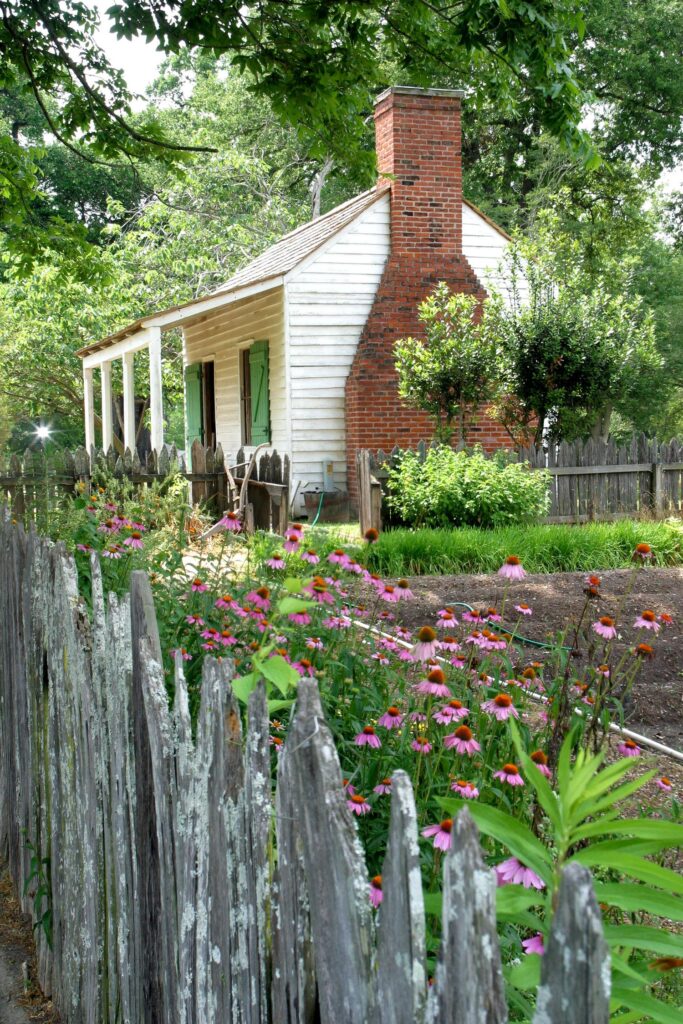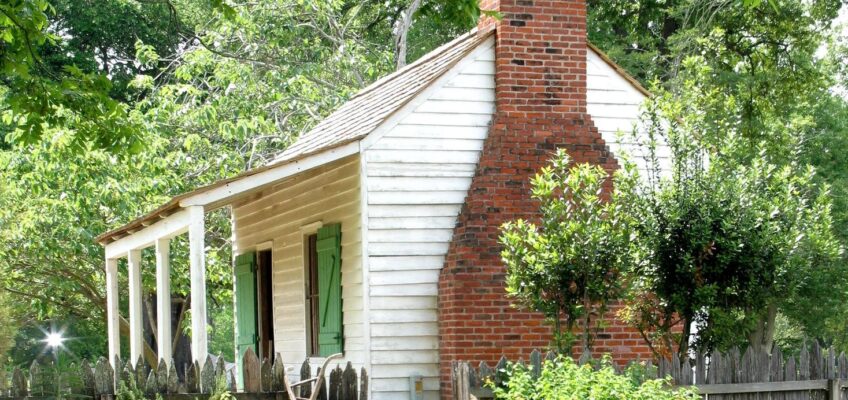Magnolia Mound’s Kitchen Garden has been a project of the Louisiana Master Gardeners of Baton Rouge for over 15 years. It has seen many changes in those years, the most recent of which is a new shed for our tools and equipment. The funds for the new shed came from BREC.
Our goal as the keepers of the garden as a demonstration gar-den is to grow crops that grow well in our Louisiana climate. The kitchen docents, who on Thursdays give cooking demonstrations of foods of the late 1700s and the 1800s, often use our produce in their recipes.
South Louisiana is a wonderful place to grow a kitchen garden with vegetables and herbs year-round. Currently we are growing the fall and winter garden. With the moderate temperatures of our long fall we can grow cole crops such as cabbage, cauliflower, broccoli, and mustard greens. We start these in mid-September for harvest from November to December and sometimes ear-ly January. We also have celery, onions, garlic, lettuce, carrots, beets, leeks and artichokes in the garden this time of year. We grow herbs for their tolerance to cold weather such as parsley, dill, cilantro, fennel, rosemary, sage, and thyme, some of which grow year-round at Magnolia Mound.

Our summer gardens are like many you see in other parts of the country, but at Magnolia Mound we start early. Our average last frost date is March 15th and we try to plant as much as we can around that date based on the 10-day forecast for no frost or freezing. Our summer plant-ings include green beans, corn, cucumbers, eggplants, okra, pep-pers, tomatoes, squash to name a few. We even grew some cotton one year as a demonstration.
At Magnolia Mound for about the last 12 years we have been planting onion plants bought from Dixondale Farms in Car-rizo Springs, TX. Their plants are beautiful and reasonable in price. Sowing onion plants is more reliable than planting from seed. In most of Louisiana and the deep south we grow what are known as Short-Day Onions. There are also Intermediate-Day and Long-Day onions, but the Short-Day Onions grow best here in South Louisiana. The bulbs start to form when the day length reaches 10 to 12 hours in early March.

The trick to large onions is to get the onions planted as soon as you can to get large leaf tops. An interesting fact is that the size of the onion bulb is dependent on the number and size of the green leaves at the time of the bulb’s maturity. For each leaf there will be a ring of onion. The larger the leaf the larger the onion ring. The perfect onion has 13 rings, so we need 13 large leaves before the bulbing process begins when the carbohydrates go from the leaves to the bulb. 
Here at Magnolia Mound we routinely plant two onion varieties: Yellow Granex and 1015Y Texas SuperSweet. Yellow Granex is the variety is grown in the Vidalia region of Georgia and is sold as a Vidalia onion. The 1015Y Texas SuperSweet is a very sweet (they can be baked with brown sugar and butter) taking its name from the ideal day to plant the seed, October 15. To get those big leaves and resulting big bulbs, we plant the small plants around Thanksgiv-ing in tilled soil that has some 13-13-13 fertilizer worked in. After 2 weeks and every 2 weeks there-after until they start to bulb we use 33-0-0, a high nitrogen fertilizer at about ⅓ cup for every 10 feet of row. Keep the weeds out and keep them watered and let them grow. Stop watering when the onions start falling over.


Leave a Reply